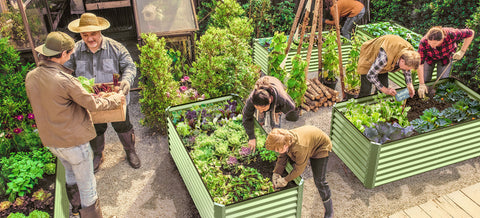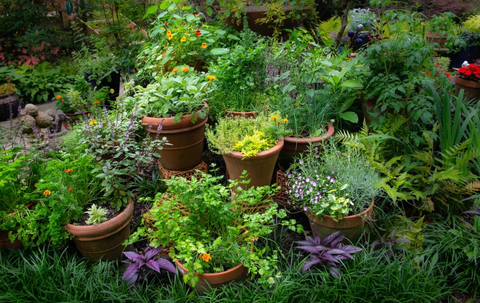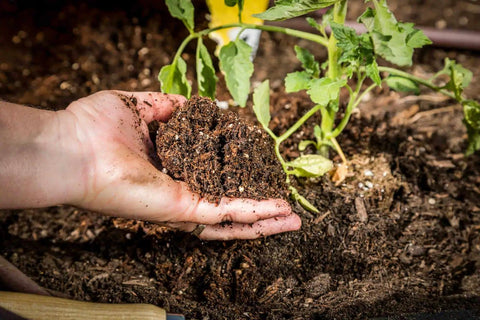Gardening is not just about the plants you choose to grow but also the environment in which you grow them. Understanding and utilizing microclimates in your garden can make a significant difference in the success of your crops. One effective way to harness these microclimates is by using raised beds. In this comprehensive guide, we will explore the concept of microclimates, how they impact your garden, and how raised beds can be a powerful tool for maximizing these microclimates to your advantage.The following content also has some reference value for raised garden beds.
Understanding Microclimates
Before delving into the world of raised beds, it's crucial to grasp the concept of microclimates. A microclimate is a small, localized area within a larger climate zone that has unique environmental conditions. These conditions may differ from the surrounding area due to factors like terrain, sunlight, wind patterns, and nearby structures.
Microclimates can have a significant impact on your garden because they influence temperature, humidity, and exposure to sunlight and wind. Here are some common examples of microclimates within a garden:
1. South-Facing Slopes:
South-facing slopes receive more direct sunlight throughout the day, making them warmer and ideal for heat-loving plants. These areas are often the first to thaw after a frost.
2. North-Facing Slopes:
North-facing slopes receive less direct sunlight and tend to be cooler and more shaded. They are suitable for plants that thrive in partial shade or cooler temperatures.
3. Sheltered Areas:
Garden beds that are protected from strong winds by fences, walls, or buildings create a microclimate with less wind stress. This can be beneficial for delicate plants that are susceptible to wind damage.
4. Low-Lying Areas:
Low-lying areas in the garden may collect cold air, leading to frost pockets. These spots can be challenging for frost-sensitive plants but are excellent for some fruit trees that require chilling hours.
5. Raised Beds:
Raised beds themselves can create microclimates. The soil in raised beds warms up faster in the spring and retains heat better in the fall, extending the growing season.
Understanding these microclimates in your garden is the first step in harnessing their potential with raised beds.

The Benefits of Raised Beds for Microclimates
Raised beds offer several advantages when it comes to maximizing microclimates in your garden:
1. Improved Drainage:
Raised beds typically have better drainage than ground-level beds. The elevated soil allows excess water to drain away more effectively, preventing waterlogged conditions that can harm plants.
2. Enhanced Soil Warming:
The soil in raised beds warms up faster in the spring, allowing you to start planting earlier in the season. This is especially beneficial for crops that prefer warmer soil temperatures.
3. Longer Growing Seasons:
The improved soil heat retention in raised beds means that you can extend your growing season into the fall. This is valuable for growing crops like cool-season vegetables or late-season flowers.
4. Weed Control:
Raised beds can help reduce weed pressure because they elevate your planting area above the ground where many weeds grow. This makes it easier to control and manage weeds in your garden.
5. Customizable Soil Quality:
You have more control over the soil quality in raised beds. You can tailor the soil mix to suit the needs of your specific plants, ensuring optimal growing conditions.
6. Easier Access:
Raised beds are typically constructed at a comfortable working height, reducing strain on your back and knees. This ease of access makes it more enjoyable to tend to your garden.

Maximizing Microclimates with Raised Beds
Now that we understand the benefits of raised beds, let's explore how you can maximize microclimates within these structures for a more successful garden.
1. Sun and Shade Placement:
When designing your raised beds, consider the sun and shade patterns in your garden. Place heat-loving plants in sunnier areas of your raised beds, while shade-tolerant varieties can go in shadier spots. You can even use taller plants or trellises to create partial shade within your raised beds for more delicate crops.
2. Wind Protection:
If your garden is exposed to strong winds, use raised beds strategically to create windbreaks. Position taller raised beds or walls of raised beds on the windward side to shield more delicate plants in lower beds.
3. Microclimate Variations:
Be aware that different raised beds in your garden may have varying microclimates. South-facing raised beds will be warmer and sunnier, while north-facing ones will be cooler and shadier. Plan your plantings accordingly to match these microclimate variations.
4. Season Extension:
Take advantage of the soil-warming properties of raised beds to extend your growing season. Plant heat-loving crops like tomatoes or peppers in raised beds early in the season, and sow cool-season crops like lettuce and spinach in late summer for a fall harvest.
5. Frost Protection:
In colder climates, use raised beds to raise plants above potential frost pockets. Cold air tends to settle in low-lying areas, so elevated raised beds can help protect your plants from frost damage.
6. Soil Amending:
Because you have more control over the soil quality in raised beds, you can easily amend the soil to suit your plants' needs. Adjust the soil composition and nutrient levels to optimize growing conditions for specific crops.
7. Crop Rotation:
Rotate your crops within your raised beds to prevent soil depletion and reduce the risk of pests and diseases. As you move plants around, consider the microclimate each bed offers to match it with the needs of your chosen crops.

Examples of Microclimate Maximization in Raised Beds
To illustrate how you can apply these principles, here are a few examples of using raised beds to maximize microclimates:
1. Sun and Shade Considerations:
Suppose you have a raised bed garden with both sunny and shaded areas. In the sunniest bed, you plant heat-loving tomatoes, peppers, and basil, taking advantage of the warm microclimate. In a shadier raised bed nearby, you grow leafy greens like lettuce, arugula, and Swiss chard that thrive in cooler conditions.
2. Windbreak Beds:
Your garden is exposed to strong prevailing winds from one direction. To protect your delicate crops from wind damage, you create a series of raised beds perpendicular to the prevailing winds. The taller beds act as windbreaks, shielding the lower beds where your more fragile plants are growing.
3. Season Extension Bed:
In a raised bed positioned to receive ample sunlight, you plant early-season crops like peas, radishes, and carrots. Once those are harvested, you use the bed to grow late-season crops like beets and kale. The raised bed's warmer soil allows these late-season crops to thrive well into the fall.
4. Frost-Resistant Bed:
You have a low-lying area in your garden where frost tends to settle on cold spring nights. To protect your vulnerable seedlings, you create a raised bed in this area. The elevated soil prevents frost damage and allows you to start planting earlier in the season.
5. Soil-Optimized Beds:
In your raised beds, you have the flexibility to tailor the soil to the needs of specific plants. For example, in one raised bed, you amend the soil with extra compost and well-rotted manure, creating a rich, fertile environment for your tomato plants. In another bed, you adjust the pH to create the slightly acidic conditions preferred by blueberry bushes.
Conclusion
Maximizing microclimates in your garden using raised beds is a powerful strategy for achieving gardening success. By understanding the unique environmental conditions within your garden and strategically placing and managing raised beds, you can create ideal growing conditions for a wide range of plants. This not only leads to healthier, more productive crops but also allows you to experiment with a variety of plants that may have different microclimate preferences.
So, the next time you plan your garden layout or consider ways to optimize your growing space, remember the potential of microclimates and the benefits of raised beds. With a thoughtful approach, you can transform your garden into a thriving oasis where your plants flourish, providing you with bountiful harvests and endless gardening satisfaction.









